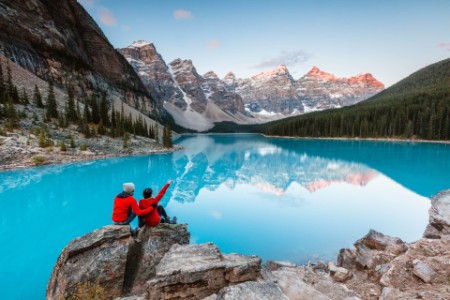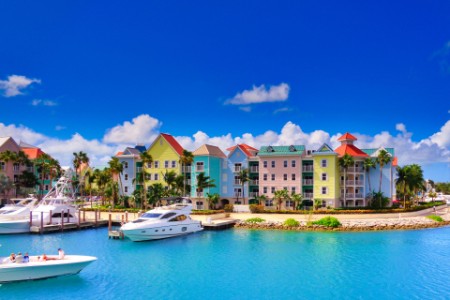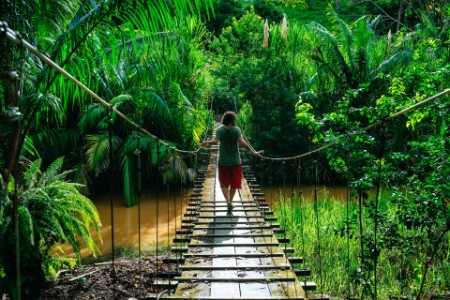In our view, the benefits and costs of tourism can be balanced through a multilayered strategy resting on five pillars.
Over-tourism is the term commonly used to describe the above phenomenon, but there is a danger in wrapping a complex, dynamic situation into a single phrase. One could be fooled into believing that there is a simple solution, such as implementing fees to enter tourist zones. A blunt-edged measure such as that might ultimately defeat the primary purpose of tourism — making the world and its most amazing places accessible to everyone, promoting cultural awareness and the exchange of ideas regardless of economic class.
In our view, the benefits and costs of tourism can be balanced through a multilayered strategy resting on five pillars. For governments and their destination marketing organizations (DMOs), whether in cities or whole countries, to successfully manage the transition to tourism’s new era requires a holistic approach. Together, the pillars should align the objectives of the visitor, the local community and the various economic stakeholders. They should optimize the product itself, the customer experience, digital capabilities and economic development, while safeguarding the destination.

Chapter 1
Do your experiences and products meet your visitors’ aspirations?
Visitors are wanting more.
What visitors want from a destination is changing. Sea and sand are no longer enough. Instead, they want a memorable experience — the sense that they have been somewhere different, delightful and unique. And the destination wants them to stay as long as possible, spend money and tell their friends that they should visit too.
Matching experience and aspiration in this way depends on a wide range of success factors and requires some deep reflection.
- Does your destination’s governance provide a single, purposeful vision?
- Are your attractions impactful and memorable?
- Does your branding and marketing align visitor expectations with your iconic identity?
- Does your transport infrastructure integrate the destination, offering easy, readily identifiable links from one place to another?
- Is there enough accommodation and is it sufficiently diverse — from hotels to home sharing?
- Is there “authenticity,” a sense of place that is rooted in history or culture?
A key exercise to begin to answer the above questions would be to benchmark your destination against others to see how well it compares to best practices, revealing areas for improvement. Then it is possible to identify and implement practical ways to improve, judged on the value they would create and the effort involved.

Chapter 2
Are the economic and social benefits fully realized?
Stakeholders must see the impact of their investment.
When planning a tourism strategy, governments and DMOs must be able to justify the investments they are making. In some instances, they will be investing significant sums in creating or improving master-planned resort areas or revitalizing an urban core — through building specific attractions, improving infrastructure or beautification. In all cases, they will have a budget for marketing which is dynamic and can be redirected according to the results.
- Do you know how you are spending your budget?
- Are you allocating your budget to the right activities to maximize the return?|Is it going to the right people, channels, activities?
- Are you monitoring the spend to understand how your strategy is performing?
- Have you got the data on who is visiting your destination and their ability to spend?
Judging the benefits of tourism can be quantified using data analytics. EY’s UK practice conducted a study in 2018 in association with London First, London & Partners, Mastercard and Airbnb. It showed that international visitors contributed £13 billion to the UK capital’s economy in 2017. This study not only showed what tourists contribute to economic activity within London’s center, but also in the peripheral boroughs.
One of the top benefits of analytics is that they reveal who is spending how much and where. They allow DMOs to focus their marketing budgets on the nationalities most likely to visit and to channel them through the medium that delivers the optimum pay back. Data analytics will reveal whether digital marketing is more effective than print, and decifer which is working the most effectively.

Chapter 3
Is your purpose aligned with your visitors’ expectations?
Appeal to the heart as well as the head.
As we become more consumer-centric, brands are becoming increasingly important. Destinations need to find ways to create a brand. And like any successful brand, they need loyal fans who will come back to them again and again, encouraging their friends to visit too.
Many organizations think that brand is about money, but the tenet of brand is about creating passion, distinctiveness, and building a positive reputation and loyalty. The brand engages its audience emotionally, by creating an inviting environment, providing positive experiences and generating a feeling, more than shared belief and solving problems. In other words, it conveys the “why”. To build a brand that’s ready for the future, you need to ask the following:
- Do you have a clear and inspiring ‘vision’ of the future?
- Do you have a compelling ‘purpose’ that reflects the destination’s DNA?
Once you have defined a vision, you can set a strategy for achieving it, along with specific goals. The purpose can act as a daily call to action for everyone working at the DMO.
A wonderful example of this can be experienced in Bermuda. Its purpose statement “celebrate the beauty of life” reflects the true essence of the destination — the buildings are multicolored, there is dancing in the streets and the beaches are beautiful. But Bermuda has gone way beyond the visual to create a distinctive experience across the entire tourism chain.
The purpose lives in the detail, in the moments that matter. The airlines flying to the island now play island music in-flight, the local mobile phone carrier flashes up the message “Welcome to Bermuda” on landing, the website loads quickly and the taxi drivers now take credit cards (which are far more convenient than cash).
The Bermuda Government is taking steps to encourage the local population to view tourists more favorably. Local school children are being asked to suggest ways through which the island can live its purpose, stoking the enthusiasm of their families. Cruise ships are now operating in a more controlled and sensitive way.
The purpose has brought together tourists, local communities, and providers in a meaningful way that has delivered far-reaching results.

Chapter 4
Is your digital strategy as smart as your visitors?
Visitors are looking for technology to improve their experience.
When tourists choose and book vacations today, they start with an online search. They may watch videos or virtual reality (VR) animations before making a selection. And when they arrive at the destination, they expect to be able to use an app to find their way round. Visitors have become digitally savvy and DMOs must rise to their expectations.
A smart, digital strategy that helps the visitor will present the destination in line with its brand purpose, while improving the experience - from booking through to the end of the vacation - and retain the visitor post-vacation through imaginative updates and offers.
While a clear strategy comes first, it must be implemented across several different dimensions. For instance, an EY team helped the Royal Caribbean cruise line to use digital to transform the holiday experience, from using facial recognition to speed up boarding; confirming via text that luggage has arrived safely; to exploring, planning and booking activities through an app.
- Does your website master the basics of clear branding and quick loading?
- Can it incorporate VR and video content?
- Can apps play a part in guiding visitors around a city or any other type of destination, as well as providing timely push notifications about specific events or discounted offerings?
- Do you collect data on each visitor to personalize the experience? (For example, if a visitor likes a particular type of food, the app can make restaurant recommendations and even make bookings.)

Chapter 5
Are the interests of all your stakeholders — visitors, community and investors — aligned?
The importance of maintaining balance.
While tourists are spending dollars in greater numbers than ever, delicate natural environments are wilting under the large number of visitors, and local communities are suffering from over-crowding and clogged infrastructure.
Some destinations are managing the conflicts well. Costa Rica is a country that has placed sustainable tourism at the heart of its development model. For example, visitor access to national parks is carefully managed and local communities benefit directly from tourism. In Rwanda, again, the local communities receive a percentage of the revenue from gorilla related tourism, which has led to less poaching and encroachments from agriculture on natural reserves and wildlife, and gorilla habitats.
The United Nations’ 17 sustainable development goals (SDGs) recognize tourism’s challenges. Notably, the eighth SDG includes the following target: “by 2030, devise and implement policies to promote sustainable tourism that creates jobs and promotes local culture and products.”
- Is sustainability part of your strategy?
- Do you know how sustainable your underlying tourism resources are?
- Have you conducted a materiality assessment?
- Do you have a management and measurement plan?
For governments, the success of tourism depends on a balancing act. Your tourism strategy needs to consider competing types of capital, whether they be human, social or financial.
Becoming a future destination
Arguably, tourism stands at a cross road. After years of often unplanned, almost accidental growth, it is having a material impact on economies and societies. Tourism authorities and DMOs are awake to the potential benefits and challenges that they face. But governments often still need to become more aware of the value of tourism and the potential for maximizing the net sustainable benefits. Given sufficient budget, DMOs can become more active, joining with government and private-sector stakeholders to develop and implement strategies that are fashioned to the unique characters of their destinations.
Just as tourists increasingly want more than a nice beach, the challenges of sustainability also mean that tourism authorities must offer other things. For those tourist authorities that adapt, there are huge opportunities. Well-planned tourism will boost economies, provide well-paid jobs and boost tax revenues without upsetting local communities or damaging ecosystems.
Every economy must play to its strengths — not every country is a competitive tech hub or an engineering center. A country or city may instead be a natural tourist destination. And with a well-conceived strategy, tourism can generate significant – even transformatory – economic growth and social benefit.
Summary
Tourism has been an unsung hero, quietly coming of age as a contributor to economies and societies. But as it relentlessly grows, reaching new records each year, how can you make sure your destination is maximizing the value of tourism while minimizing the hidden costs?

